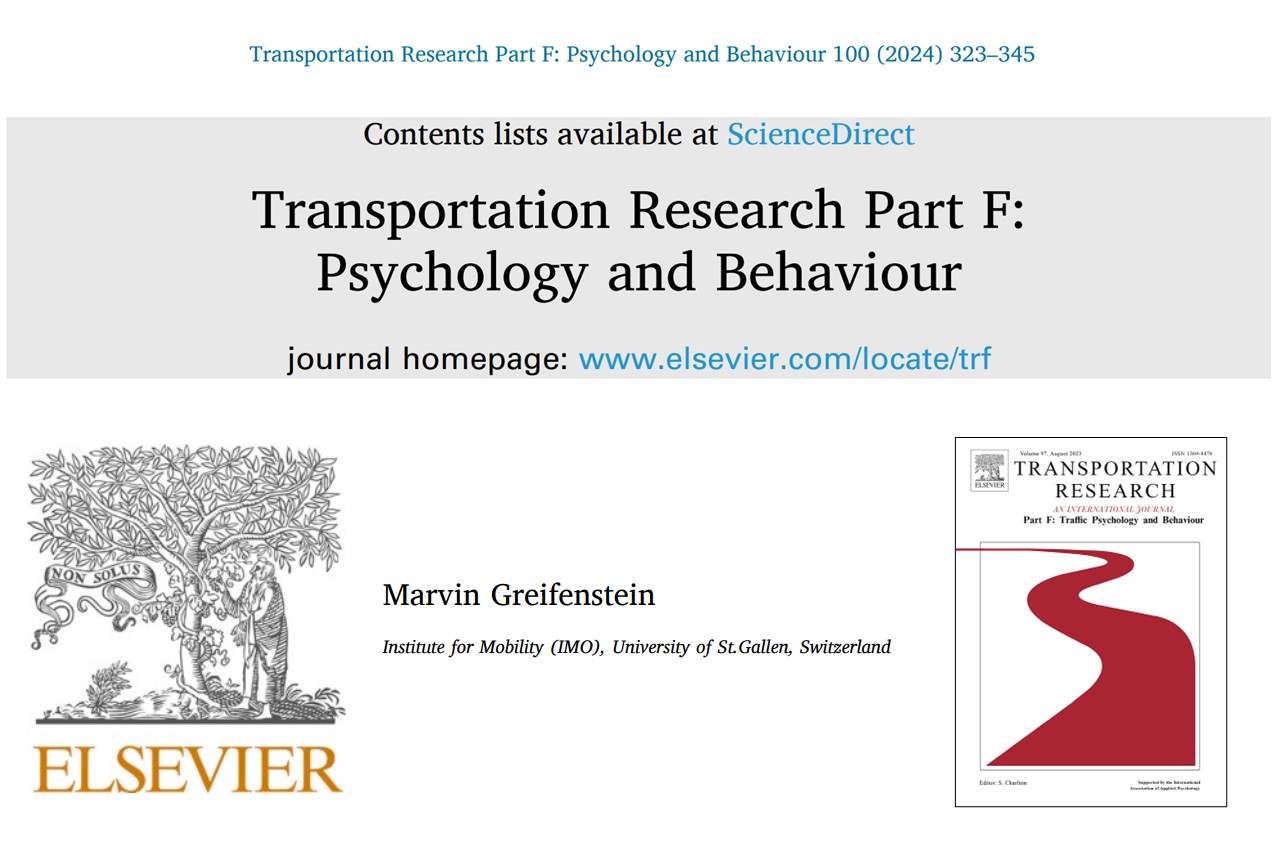Imagine a fully autonomous and shared future of mobility, where people no longer own their own vehicle, but use robo-taxis, -shuttles or -buses. Sounds great, right?
Journal article: Factors influencing the user behaviour of shared autonomous vehicles (SAVs): A systematic literature review
The future of transport is on the cusp of a revolutionary transformation with the advent of autonomous driving technologies. Among the key components of this mobility evolution are shared autonomous vehicles (SAVs), anticipated to play a pivotal role in shaping sustainable transportation services of the future. As we move towards shared use models rather than private ownership, understanding the factors influencing user behaviour, such as intention and willingness to use SAVs, becomes paramount.
A recently published Transportation Research Part F review article by Marvin Greifenstein, research assistant and PhD student in the PwC Lab for Smart Mobility, aims to unravel this complex web by conducting a systematic literature review that sheds light on the multifaceted dynamics of user behaviour in the field of SAVs. It also identifies tendencies on whether these factors have a positive or negative effect. Ultimately, 61 aggregated factors were identified and grouped into 3 main categories: user-related, service-related and time- and weather-related factors.
The article concludes by demonstrating research gaps and avenues for future research:
– Expanding geographical coverage – More than 35% of the studies account to USA and China.
– Extending research on vehicle types – Roughly half of all studies focus on SAVs in general without further differentiation between the different vehicle types.
– Addressing the service-, time-, and weather-related factor gap – Those two categories account for just 17% and 10% of all factor counts.
– Intensifying the utilization of theoretical frameworks – Only 1/3 of the studies used a theoretical framework.
– Employing new research designs – More than 80% of the studies deployed a quantitative design.
– Studying SAV user behaviour as part of urban mobility solutions – It is crucial to understand an potentially increasing use of SAV on urban mobility solutions and cities.
Many thanks to PwC Germany for the opportunity to conduct research on SAVs and to enable this article as part of the PwC Lab for Smart Mobility.
For more insights read the full article by Marvin Greifenstein here:
Kontakt
Marvin Greifenstein, marvin.greifenstein@unisg.ch
Imagine a fully autonomous and shared future of mobility, where people no longer own their own vehicle, but use robo-taxis, -shuttles or -buses. Sounds great, right?
Journal article: Factors influencing the user behaviour of shared autonomous vehicles (SAVs): A systematic literature review
The future of transport is on the cusp of a revolutionary transformation with the advent of autonomous driving technologies. Among the key components of this mobility evolution are shared autonomous vehicles (SAVs), anticipated to play a pivotal role in shaping sustainable transportation services of the future. As we move towards shared use models rather than private ownership, understanding the factors influencing user behaviour, such as intention and willingness to use SAVs, becomes paramount.
A recently published Transportation Research Part F review article by Marvin Greifenstein, research assistant and PhD student in the PwC Lab for Smart Mobility, aims to unravel this complex web by conducting a systematic literature review that sheds light on the multifaceted dynamics of user behaviour in the field of SAVs. It also identifies tendencies on whether these factors have a positive or negative effect. Ultimately, 61 aggregated factors were identified and grouped into 3 main categories: user-related, service-related and time- and weather-related factors.
The article concludes by demonstrating research gaps and avenues for future research:
– Expanding geographical coverage – More than 35% of the studies account to USA and China.
– Extending research on vehicle types – Roughly half of all studies focus on SAVs in general without further differentiation between the different vehicle types.
– Addressing the service-, time-, and weather-related factor gap – Those two categories account for just 17% and 10% of all factor counts.
– Intensifying the utilization of theoretical frameworks – Only 1/3 of the studies used a theoretical framework.
– Employing new research designs – More than 80% of the studies deployed a quantitative design.
– Studying SAV user behaviour as part of urban mobility solutions – It is crucial to understand an potentially increasing use of SAV on urban mobility solutions and cities.
Many thanks to PwC Germany for the opportunity to conduct research on SAVs and to enable this article as part of the PwC Lab for Smart Mobility.
For more insights read the full article by Marvin Greifenstein here:
Kontakt
Marvin Greifenstein, marvin.greifenstein@unisg.ch

